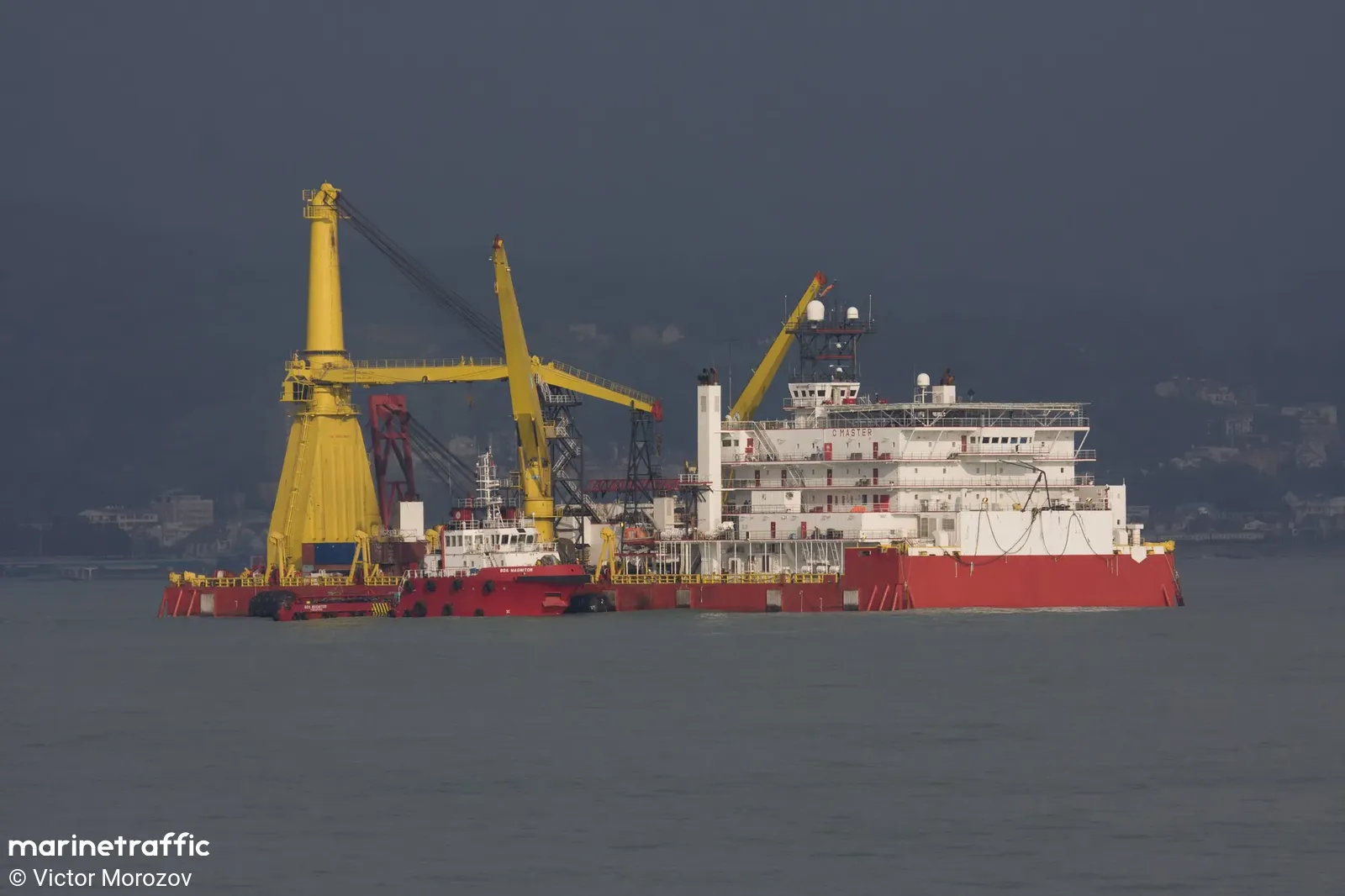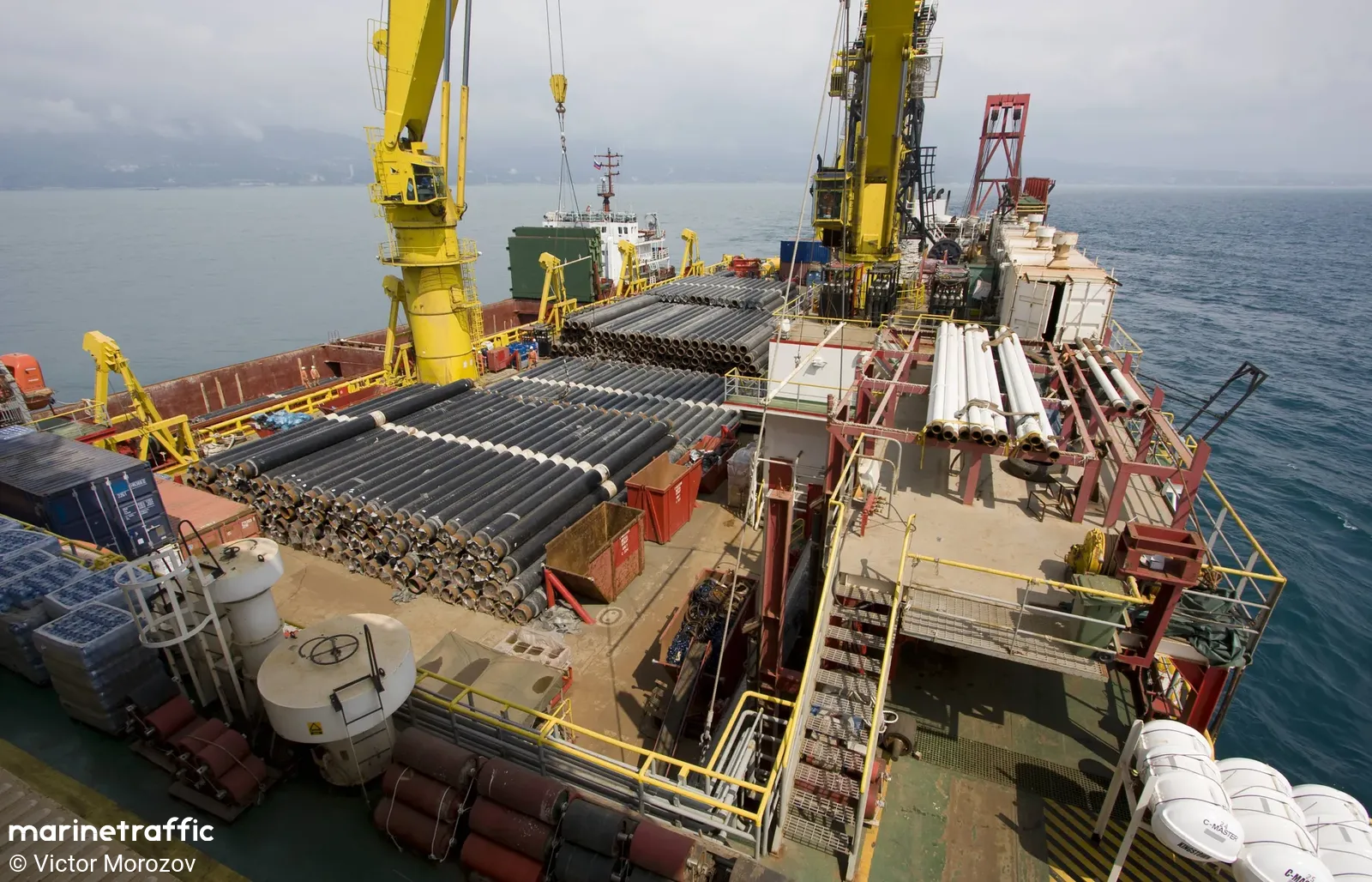Plans have been in motion by Iran since 2017 to construct an oil export terminal ahead of the Strait of Hormuz. Most of the original articles that wrote about the topic specified “Jask” as the port of export. And though it faces the wide open Gulf of Oman towards the south without any obstructions, we were unable to find any storage tanks at Jask. The oil terminal would be connected by pipelines stemming from the northwestern part of Iran’s lengthy coastline, where the giant and supergiant oil fields are located. We continued to look further, and saw references of “Mount Mobarak”, which translates to “Kooh Mobarak” in Persian. Sure enough, we found the spot and saw the development. We could see that construction began during June 2019, which is around the time the Gulf of Oman became stage of the infamous “Tanker Tussle” where multiple tankers were sabotaged by limpet mines.
![]()
According to Shana, the storage tank farm is due to initially launch in June 2021 with 4 operational tanks, each capable of holding 500,000 barrels of light and heavy crude oil. The tank farm itself is due to reach 10 million barrels of storage capacity (20 tanks) by March 2022. We can already see that two tanks in the southwest corner are nearing completion. However we can also see that out in the water, a Panama-flagged vessel called C MASTER is laying down a submarine pipeline that will lead from the tank farm out into the water. Although news articles haven’t specified what kind of vessel sizes the farm will be able to accomodate, we can see from the water depth in which the C MASTER is operating in, that it’s not particularly deep. Our assumption however, is that they will extend the pipeline slightly further out into deeper water and accomodate VLCC supertankers capable of carrying 2 million barrels once every other day. That would be the wisest thing to do because it allows them to cater to the full range of vessel sizes ranging from Aframax, to Suezmax and VLCC. Our expectation would mostly be Suezmax and VLCC.
C MASTER pipe laying vessel; photo via MarineTraffic
![]()
So, what are the benefits of placing an oil terminal here?
Naturally, the first intuitive answer would be that Iran is mitigating geopolitical risk and controlling the flow of the “oil tap” of the region in case the IRGC ever wants to attempt a closure of the Strait of Hormuz. We do not believe that they would be inclined to do so, at least not to any lengthy degree of time because it would further vilify Iran in front of the international community (triggering possible UN sanctions), but more importantly it would upset their largest oil customer, China. If China can’t access oil from Iran’s neighboring countries, then China will likely cut off relations with Iran. That’s something that Iran doesn’t want to see happen.
We believe it comes down to optimizing exports while maintaining the illusion and narrative of being a regional gatekeeper that has as an Ace up its sleeve in case they want to issue any threats. The problem is that after a while, threats turn into action and reaction, and a site like Kooh Mobarak may become a target of attack. Saddam Hussein bombed out Kharg Island during the 1980’s in order to choke off Iran’s ability to export crude oil. Given that Iran has upped its air defenses with surface-to-air missiles and successfully shot down a US UAV as recently as 2019, it is likely that Kooh Mobarak will be extremely well protected from any attacks, just as Syria has done at Baniyas.
As for optimizing exports, as long as the tank farm is receiving the key exports grades of light, medium and heavy crude oils which Kharg Island exports, then the farm will serve its purpose well. The additional crude oil grades such as Soroosh, Bahregan, Lavan and Sirri will need to be collected at their respective offshore terminals located past the Strait of Hormuz. Though those grades are minority compared to what Kharg Island exports, we have noticed over the past couple of years (particularly as of 2020) that Iran is exporting more barrels of heavy sour crude oil (Soroosh and Bahregan) as a result of sanctions on Venezuela. The additional optimization is that loading up at Kooh Mobarak will mean saving around 4 days of extra travel time because it takes 2 days to reach Kharg Island from there.
What are the downsides?
The downside of having an SBM out in the Gulf of Oman is that it needs constant protection such as how Syria has now with the help of the Russian navy after a series of purported sabotage incidents since 2019. The other is that tankers will immediately fall under surveillance and will be relatively easy to spot and identify as a result. This will deter clients in the short term until sanctions have been eased/removed sometime in the future. Even today at Kharg Island, we see NITC vessels first load up oil only to then hand the oil over a day or two later to a foreign-flagged vessel nearby all because the foreign vessels do not wish to be seen at the oil terminal.
So now the question is, will Iran use Kooh Mobarak as its first or last venue of choice?
UPDATE 2021-02-19:
From what we can tell, the C MASTER pipe laying vessel along with the assisting offshore supply ship C ANGELLO are now operating in deeper waters 2.5 nautical miles (4.63km) off the coast of Kooh Mobarak. That means at these depths of 36 meters, Iran will be able to accommodate both VLCC and Suezmax-sized vessels. Given that there will be a combination of light and heavy grades of crude oil arriving into the storage tanks on shore from up the coastline, it is very likely that an SBM would host a VLCC over a 48 hour period in order to load up 2 million barrels of heavy crude oil.
![]()

